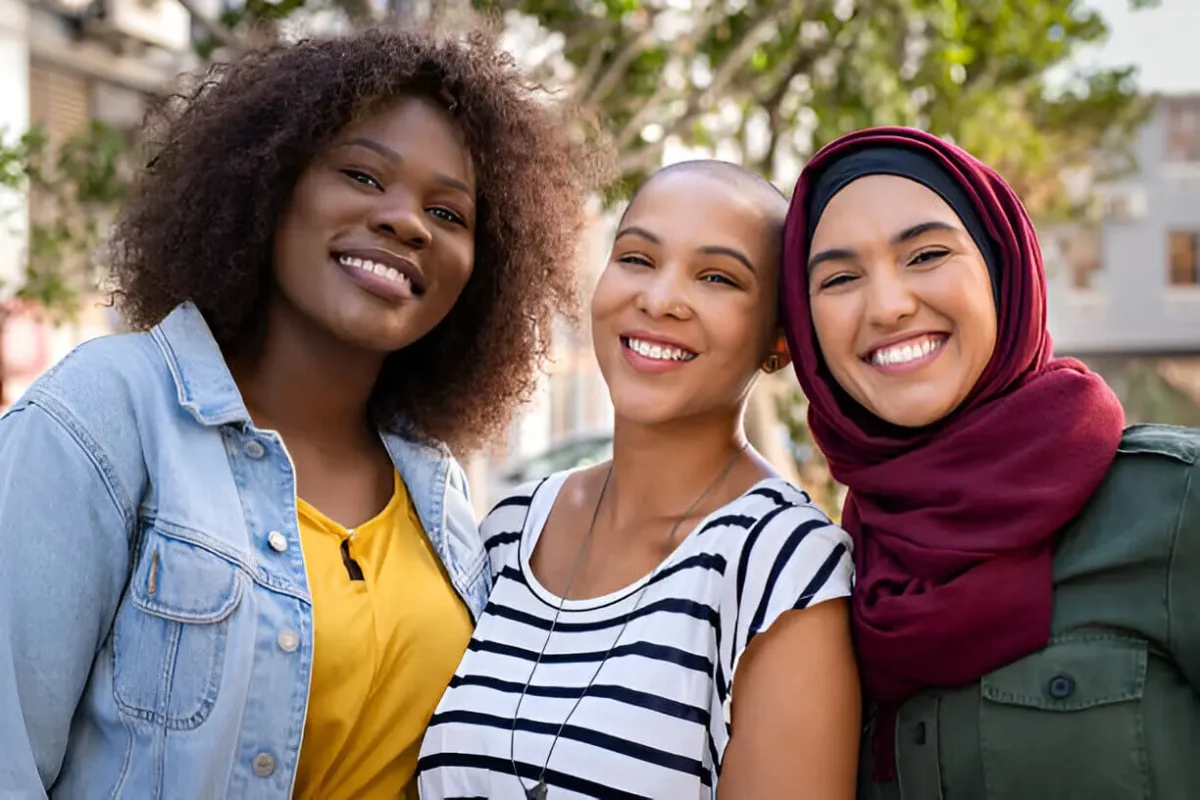Autonomy and Individual Freedom
In the summer of 1957, a young lady called Jane planned to travel nationwide. She couldn’t stop becoming enthusiastic about seeing the sites and meeting new people as she packed her belongings.
Jane is a free-spirited individual who likes exploring. In addition, she had a strong feeling of independence, always taking charge of her life and setting her course.
Jane embarked on her voyage with a spirit of adventure and freedom. She was free to go anywhere, do whatever she wanted, and make her own decisions since no one was instructing her what to do.
Jane’s feeling of independence and personal freedom was essential to her identity, which gave her life meaning and purpose.
Individual freedom and autonomy are intrinsically related. Autonomy refers to the capacity to make decisions alone, without outside influence or control.
Personal space, on the other hand, refers to the ability to do whatever one wants, regardless of the impact on others.
These notions are essential in the domains of psychology and cognitive science because they substantially impact how we view ourselves and interact with others.
To properly comprehend the relevance of these principles, it is vital to examine the links between autonomy and individual freedom, as well as other essential psychological notions such as self-determination, agency, and control.
At its essence, autonomy is the ability to pursue one’s aims and interests without interference from others. The ability to govern our lives and make choices consistent with our values and beliefs is a crucial component of human psychology.
Individual freedom is defined as the right to do anything one wants without interference or restraint from others.
Political freedom (such as the right to free speech and assembly) and personal freedom (such as the ability to choose who one associate with and how one lives one’s life) are both instances of freedom.
Individual liberty and autonomy work together to offer the basis for a happy and satisfying existence.
Our ability to feel the agency and control that comes with the freedom to select and pursue our objectives is critical to our psychological health.
We may create a strong sense of self and purpose when we are allowed the freedom to do as we like. This sense of self and purpose may encourage us to tackle and overcome our obstacles.
Undoubtedly, some obstacles and concerns may limit individual freedom and liberty. For example, institutional frameworks, cultural norms, and social practices may pressure individuals to follow specific standards and behaviours.
In addition, injustices and power imbalances produced by political and economic institutions may impede people’s ability to express their independence and autonomy.
To completely grasp the intricacies of autonomy and individual freedom, it is necessary to consider a variety of ideas and points of view.
Some may argue that personal liberty is essential, while others may focus more on social duty and overall well-being.
Like independence, some individuals may see it as a fundamental human right, while others may regard it as a luxury available exclusively to those who can afford it.
Individual liberty and autonomy issues can only be addressed or handled partly. Nevertheless, it is a recurring argument that necessitates examining various social, cultural, political, and economic elements.
By thoroughly and nuancedly evaluating these difficulties, we may better understand what it means to be a free and autonomous person in today’s complicated and fast-changing world.
Polyamory
Polyamory is a unique term for a certain kind of partnership. Although combining Greek and Latin origins in a single phrase is against the rules, loving more than one person simultaneously is against romantic or passionate love regulations.
In the late 1980s, Morning Glory and Oberon Zell coined “polyamory.” Poly is derived from Greek and means “many,” but amory is derived from Latin and means “love.”
Given how few individuals risk even a casual talk with a potential partner about their sexual exclusivity aspirations, it’s hardly surprising Jenna and Gary didn’t realize they had differing expectations about polyamory.
Although on the right track, they could not attain their goal without assistance.
This couple’s marriage, which began in 1974, has evolved in various ways, including a ten-year live-in triad and a ten-year six-person group marriage.
However, even though we are among a few pioneers who have traversed this new area and thoroughly analyzed its consequences over the last thirty years, neither the Zells nor Myself invented the polyamorous lifestyle.
I use the term polyamory to refer to the whole range of love styles that stem from the realization that love cannot be coerced or stopped from flowing in any way.
When a pet is allowed to grow, it often expands to encompass many humans. Nevertheless, rather than the number of people involved, polyamory seems more about an internal attitude of allowing love to bloom without expectations or demands that it look a certain way.
Few deny that marriage and personal relationships have changed dramatically in the last several decades. Traditional marriage, according to the great majority of observers, is failing.
Even though some marriages are successful, they are the exception. Many individuals are anxious about their chances of achieving marital happiness and have become more interested in alternatives as divorce rates rise, marriage rates fall, and infidelity and sexless marriage rates skyrocket.
A growing number of individuals recognize that everlasting monogamy is an illusion rather than a reality. At the same time, most marriage, family, and sexuality specialists continue to write and talk as if all extramarital sex is infidelity.
While it is often assumed that an affair might unintentionally save a failing marriage, the government does not recognize polyamory or voluntary, inclusive partnerships.
The debate has come to an end. Those brave people who try to understand their dynamic relationships are the losers.
Unspoken and undiscovered alterations in how we mate naturally perplex us all. Yet, denying that these changes are taking place will not help us adjust to the ones that have already occurred, nor will it help us build new ways of interacting that are fit for the twenty-first century.
Changes in belief systems typically follow changes in behaviour, as has been seen, but nowhere is this more true than in the context of passionate love.
Meanwhile, many more are casting ballots online. Because of the newly enlarged Internet’s power, polyamory has spread like wildfire.
A recent Google search produced more than 1.8 million results. In terms of use and connotation, this newly invented word has taken on a life of its own in less than twenty years.
Polyamory is a new trendy term that may signify various things to different individuals.
As a consequence, your uncertainty regarding polyamory is not unique. Some individuals still mistake polyamory for polygamy, which is the practice of having many marriages regardless of gender.
It does, however, represent the patriarchal marriage structure in which a man has several wives, and the ladies remain loyal to their various husbands.
The Oxford Dictionary defines polyamory as “(1) establishing intimate emotional connections with two or more other people at the same time, as an alternative to monogamy, particularly in matters of sexual fidelity; (2) the habit or practice of participating in several sexual relationships with all partners’ knowledge and permission.”
Jenna claimed that Gary, on the other hand, identified as polyamorous and was determined to have several sexual relationships regardless of emotional commitment.
Both were surprised to discover that they were playing by different rules since they were unaware they had such diverse expectations for their relationship.
Their new partnership was quickly derailed by resentment toward the other for having a different aim.
Values Versus Form In Polyamory
Since so much of the discussion about polyamory has focused on the relationship form instead of the underlying values and belief systems, such mistakes are too common.
Although two relationships are the same, the people engaged in them will have quite diverse experiences. They assume that there are two heterosexual married couples.
They had been dating for eleven years before marrying in their early thirties. In one marriage, the conventional “forsaking all others till death do us part” commitment persists, but neither partner is emotionally or sexually fulfilled. When Sheila chose to marry Fred, her biological clock ran out of time.
He is a dependable provider and dedicated parent, yet he prefers golf over sex and avoids fights at all costs.
Sheila considered having an affair as her sexual agony and loneliness increased, but she decided against it because she was frightened of getting divorced.
As Fred got increasingly involved with his profession, she started to emotionally and sexually remove herself from him. Although they seem to be the perfect pair on the surface, Sheila would leave the couple immediately if it weren’t for their two sons.
Gina and Eric met at the same company where they both worked. They were drawn to one other but were hesitant to engage in sexual activity in the workplace’s “fishbowl.”
Instead, they became close and had numerous in-depth conversations about life and love, discovering that they shared interests in cooking, surfing, mountain climbing, spirituality, and uniqueness.
They decided to have an open relationship with as few restrictions on each other’s ability to choose other sexual partners as possible.
“I don’t want to keep my husband in jail, and I don’t want to be in prison,” Gina said. As a result, they opted not to contact other partners throughout the early years of their relationship.
However, they eventually met and dated another couple who matched their interests for nearly a year. Gina and Eric were upset by the other couple’s divorce choice, but they were thankful they still had each other.
While their marriage is still technically open, they find that they grow less interested in incorporating others as time passes.
We have no constraints on outside intimacy, Eric says. It may happen again, but it would take someone extraordinary to get our attention.
Even though their relationship seems to be monogamous, Gina and Eric are polyamorous; the truth is, we’re pleased with what we have and don’t feel the need for other sexual relationships.
In my perspective, the number of partners a person has is not the most critical aspect of polyamory. Instead, it lets go of preconceived preconceptions about the form of a meaningful connection and allows love to determine the best shape for both individuals.
I would still consider two people polyamorous if they chose to be monogamous sexually without being compelled to or fearing the consequences.
Polyamory’s forefathers did not intend to replace one “should” with another. But, in areas where polyamory is prevalent, this is what many individuals do. They are forced to follow a nonmonogamous ideal and ideology rather than a monogamous one.
During this period, young individuals who find polyamory “too mainstream” or “too tough” reject the whole tradition and develop their notions, such as friends with benefits and relationship anarchy.
Labels, classifications, and groups help us communicate and understand our experiences, but what is the point of replacing one rigid belief system with another?
Understandably, most people assume that polyamory is about demanding one’s right to several sexual partners or multi-partner relationships.
Two examples are an open relationship in which a couple, whether married or unmarried, decides to have several lovers or a private network of couples and individuals who have continuing romantic relationships but do not live together.
Said, polyamory is a relationship alternative to the two most common relationship alternatives in the Western world, serial monogamy and monogamy with concealed ties.
To those of us who coined the term polyamory, the appearance of the relationship is less important than the underlying beliefs.
Polyamory is the freedom of giving oneself to love and allowing love to shape our relationships rather than sexual desire, cultural traditions, religious limits, emotional reactions, and unconscious conditioning.
The decision to recognize the many ways meaningful relationships might emerge is at the heart of polyamory.
Polyamory is not what it was meant to be if there is coercion, fraud, or any other integrity violation on the side of the participants, regardless of how many persons are sexually linked with each other.
Yet, despite their relevance in understanding the deeper meaning of polyamory, these more complex features are sometimes forgotten in the excitement and glitter of embracing sexual freedom.







